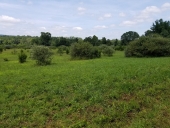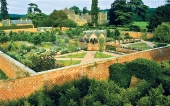Geoff Lawton wrote:Hi Tim
edge think everything in time and space from here on in. The highest the lowest, the longest the shortest, the quickest the slowest, the first the last etc etc etc.
Ok start all action very small tight and close everything easy and achievable and just do that for this summer season.
Observe and think very big and plan everything in the main frame in this order of priorities over the winter months:
I want to express my gratitude and excitement over your presentation of these two topics: edge thinking and mainframe design patterning.
The combination of these two approaches has vastly simplified my approach to permaculture design, especially for complex and/or broad acre sites.
In my opinion, this is also Sepp Holzer's approach, starting at the top and bottom of the landscape with the most permanent or regenerative features (Water retention and management often). Then working towards the middle, filling in the details as the system evolves and various ecologies and opportunities emerge.
I am still continually humbled by my attempts to put systems into place and manage them through time, particularly in the hot-cold 4 season desert where I'm based (summer dry, winter wet). I think Patience and edge thinking at various time scales has been one of my biggest lessons. I think I have stumbled into the mistake you mentioned about trying to force productive plants faster than the soil will allow rather than waiting for the pioneers to do their job with some of my food forest plantings. I hope I can get enough pioneers in now to help the fruit and nut trees that are already planted.
with regards to patience, I would like to ask about planning succession through time in arid climates, where one of our main design objectives is to reduce evaporation.
Are there examples when you would not broadcast plant cover crop such as annual and herbaceous n-fixing pioneer plants? but rather plant hardy pioneer shrubs and trees that get spot mulch and drip irrigation for establishment and to develop a shade canopy? What edges, thresholds, or parameters would you consider in making this decision? I guess at it's basis, I'm wondering about variations to accelerating succession based on climate, access to water, zonation...
I have taken this approach to establishing windbreaks on the perimeter of zone 2 and in zone 3-4, and it seems to be working, although I'd like continue improving my approaches.
Are there edges or thresholds (particularly of aridity (precip : ET) and temperature) that define where food forests or forests in general are not an appropriate design pattern?
In the climate and precip zone (150-175 mm annual average) where I live, there are few forests and these are scattered at specific points in the landscape (riparian corridor forests, leak points on slopes, and at higher elevations/topography), so I think it may be a question of scale and whether the appropriate landscape features fall within a design site.
My understanding is that in general Permaculture designs optimize edge through a mosiac of forest, grassland/pasture, human structures, and pond/water systems placed to harmonize with the landscape and climate parameters. Translating this to a specific site taps the beauty of human creativity and ingenuity.
thanks again for all that you do for the Permaculture community worldwide. Your work and network have been a continual source of inspiration for my on my Permaculture journey.
Neil Bertrando
















































